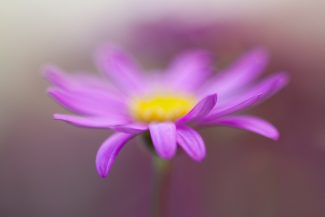Editor’s Key Takeaways: Master Photography: 52 Easy Tips for Amazing Photos

The blog post aims to help readers improve their photography skills by providing a comprehensive list of useful tips. It guarantees that by taking into account all the tips shared, one will become a master photographer. The main tips include:
- Choosing a Suitable Camera: A camera that fits your shooting needs is recommended.
- Utilizing Golden-Hour and Cloudy Lighting: These lighting conditions can enhance the tones and colors in your photos.
- Applying the Rule of Thirds: This technique can balance your compositions.
- Choosing the Best Aperture and Shutter Speed: Proper choice of these can create sharp images or produce an impressionistic effect.
- Experimenting with Angles: Trying out different angles for original photos is encouraged.
- Shooting in RAW Format: This gives you the most processing freedom.
- Exploring High-Contrast Situations: This leads to more impactful shots.
- Using Complementary Colors: Matching complementary colors can result in stunning images.
- Photo Simplification: Simpler compositions often result in better photos.
The blog post also emphasized on daily practice and finding a powerful main subject to anchor a photo. The use of techniques such as the broken backlighting technique for beautiful bokeh, increasing the subject-background distance for background blur, and shooting through other objects for an artistic foreground wash are also suggested.
Introduction
Do you want to improve your photography and take it to the next level right now?
You can.
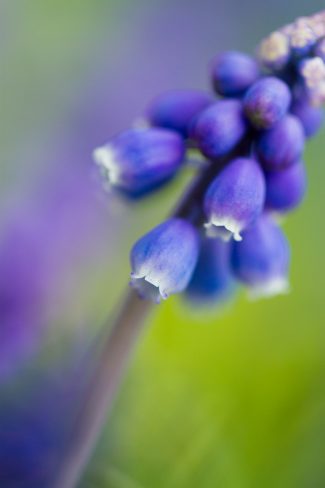
Because here’s the thing:
Photography isn’t actually difficult. It just takes a bit of know-how–which I’m going to share with you in this article.
In fact, I’m going to give you 52 tips to improve photography. Each one is guaranteed to make your photos better.
And all of them put together…
…well, once you’ve learned all the tips, you’ll be a master photographer. Seriously.

Are you ready to become a great photographer?
Let’s get started.

Tips to Improve Your Photography Skills:
1. Choose a Camera That Suits Your Shooting Needs
When it comes to capturing beautiful photos…
…there’s no perfect camera.
Instead, the best camera depends on your own shooting needs. It depends on whether you want to capture portraits or wildlife, landscapes or travel photos.
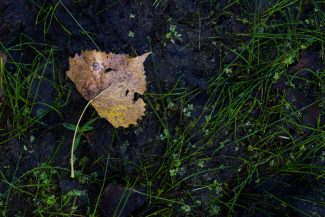
But here’s a few quick recommendations:
The cameras that combine power and affordability are DSLRs and mirrorless cameras. Right now, mirrorless options are still expensive, but you can grab DSLRs for under 500 dollars. If you go for a DSLR, Nikon is a great choice, as is Canon.
Now, pretty much any DSLR or mirrorless camera will get you amazing, professional-quality images. Where they differ is in terms of features.
If you want to capture action photography (e.g., wildlife or sports), you’re going to want a camera that has a high continuous shooting rate. Five frames-per-second is adequate, seven is good, and ten is great.

If you want to capture landscapes or travel photos, you need a camera with a higher megapixel count, because you’ll want to capture as much detail as possible.
And if you want to capture beautiful portraits, you’ll need a camera that does well in low light–because you’ll often be shooting people moving quickly in the evening.
2. Shoot in Golden-Hour Lighting for the Best Tones
Great photos start with great light.
And the absolute best light of all, the light that photographers love…
…is golden-hour light.
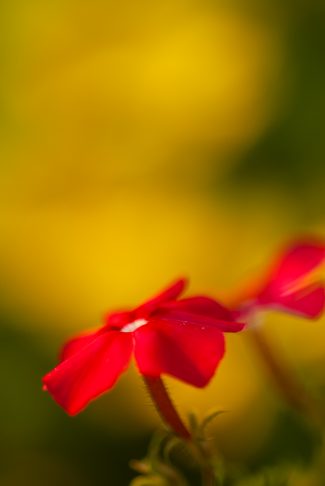
Now, the golden hours refer to the hour or two after sunrise, and the hour or two before sunset. During the golden hours, the sun is low in the sky. And it casts a beautiful golden glow over the entire scene.
Which is exactly what you want in your photos.
This is fantastic light for illuminating details in images. It’ll help you capture every tone in the scene, from dark blacks to bright whites.
In fact, I suggest you use golden-hour lighting as a ‘go-to,’ of sorts.
It really is that great!
3. Shoot in Cloudy Light to Enhance Your Colors
Golden-hour lighting works well in pretty much every photographic situation.
But what if you don’t have golden-hour lighting? What then?
Unfortunately, harsh midday lighting, when the sun is high in the sky, rarely looks good.
But there’s one type of light that is great for a more subtle look:
Cloudy light.
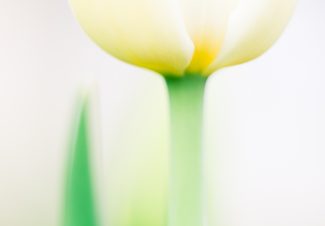
You see, clouds diffuse the harsh sunlight, and it turn it into something soft. This will give your photos a nice, airy look.
Cloudy light is also great for bringing out colors. The soft light makes your colors appear far more saturated, and it gives subjects a richer appearance, like this:
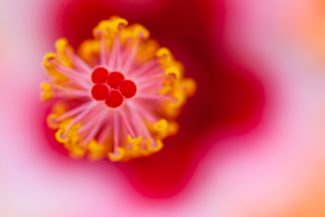
4. Use Frontlight to Evenly Illuminate Your Subject
Even once you’ve secured good light, you still have to make sure you use it properly.
In particular:
If you’re shooting in golden-hour light, then you have to pay attention to its direction. Does it come from behind you? In front of you? Off to the side?
Related Posts
Light that comes from behind you to hit your subject is known as frontlight. This is a go-to type of light for photographers, because it does a great job of evenly illuminating your subject. It helps portray all details, and ultimately makes your subject look more stunning.

So if you’re looking for a classic, even look, go with frontlight.
5. Use Backlight for Deeply Dramatic Images
Frontlight is great for producing an evenly lit photo.
But what if you want something a bit more dramatic?
That’s where backlight comes in.
Backlight comes from behind your subject, and it gives you dramatic images, like this:
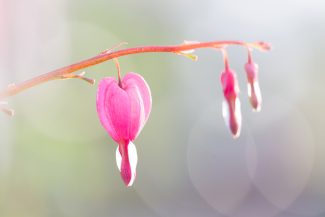
Now, to take advantage of backlight, you have to shoot into the sun. So point yourself in the direction of the sunlight, and find a subject that stands between you and the sun.
You want to make sure the sun is very low in the sky–otherwise, the angle won’t be right, and you’ll struggle to get a good-looking photo.
In general, I recommend against including the sun in the frame. You should put the sun behind your subject, so that it’s blocked from view. Or you should put the sun just out of the frame. Otherwise, you’ll end up with a photo that’s far too bright–because the sun, even when it’s low in the sky, is extremely powerful.
6. Use Sidelight to Bring Out Texture
Sidelight is your third golden-hour lighting option.
Now, sidelight is a bit less common than frontlight and backlight. This is because sidelight is good for one main thing: bringing out texture.
Basically, sidelight comes from off to the side of your subject. It casts shadows in places where texture exists, which makes the texture stand out.
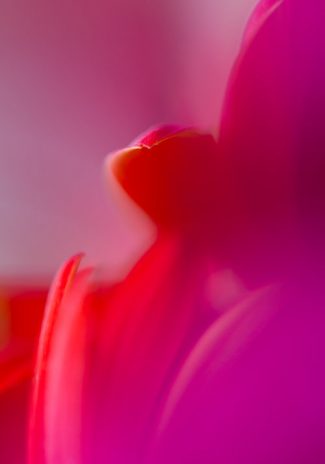
You can also use sidelight to create images with more depth. The shadows give your subject a more three-dimensional appearance, and the overall image becomes more lifelike.
But you should be careful with sidelight. The look is very distinctive, and it doesn’t work for every situation. Only use it when you’re confident you want a more dramatic, textured style.
7. Use the Rule of Thirds to Balance Your Compositions
The rule of thirds is a fundamental guideline of composition.
It states:
The best photos position their main subjects a third of the way into the frame. The rule of thirds comes with a set of helpful gridlines, like this:

Basically, if you want to create a nice, balanced, satisfying composition, I recommend you place your main subject (and any other important elements) along the rule of thirds gridlines.
Related Posts
If you can get your subject at the intersection of two rule of thirds gridlines (known as power points), even better.
I positioned my main subject at a power point in this photo:
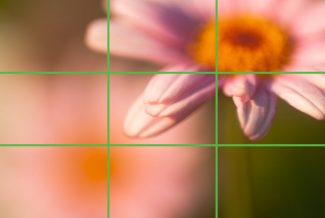
See how the photo feels very satisfying? As if everything you need to see is contained within the photo itself?
That’s because of the rule of thirds.
8. Carefully Choose the Best Aperture for the Scene
The aperture is a hole in the lens of your camera. You control it via the dials on your camera.
When the aperture is wide open, more light comes through the lens, and gives you a brighter photo (all else being equal). This is represented as a low f-number, like this: f/2.8, f/4, f/5.6, etc.

And when the aperture is closed down, so that it’s very small, less light comes through the lens, giving you a darker photo (all else being equal). This is represented as a high f-number, like this: f/8, f/11, f/16, etc.
This is important for the exposure, which refers to the overall brightness of the scene. So if the scene is dark, you’ll want to use a wider aperture in order to bring in enough light to capture a detailed photo. And if the scene is light, you’ll want to use a narrower aperture in order to avoid an overly bright image.
But here’s another important thing about aperture:
The wider the aperture, the narrower the plane of focus in the image.
In other words, a wide aperture gives you a blurry background, like this:
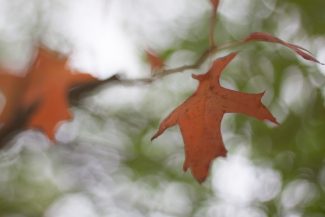
Now, there is no one right amount of blur. To blur the background or not to blur the background is an artistic choice.
But in general, blurry backgrounds help eliminate distractions, especially if the background is messy. Whereas sharp backgrounds are good if the background itself is beautiful, like in a sweeping landscape shot.
So before you take a shot, think about your aperture–and what makes sense given your creative vision.
9. Use a Fast Shutter Speed for Sharp Images
Shutter speed refers to the length of time the camera sensor is exposed to the light.
In other words, your shutter speed is how long you actually take a picture for.
Related Post: Working with Shutter Priority
Now, if you use a slow shutter speed, it creates the potential for intense blur. Because so many things can happen while the shutter is open: Your hands can shake. Your subject can move.
That’s why you should use a fast shutter speed. Because a fast shutter speed will ensure you get absolutely no blur, and your photos are ultra-sharp.
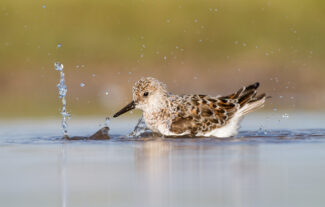
Shutter speeds are written in fractions of a second, like this: 1/20s, 1/50s, 1/100s, etc. You can dial a fast shutter speed into your camera, something in the area of 1/200s and above. Soon, you’ll find your shots become consistently sharp!
10. Create Impressionistic Photos With Slow Shutter Speeds
I know I said it’s important to use a fast shutter speed for sharp photos.
And it is–usually.
But you occasionally don’t want to capture sharp shots. Sometimes, you want to get more artistic photos, using something called Intentional Camera Movement (ICM).
Here’s how it works:
Select a slow shutter speed, something between 1s and 1/20s.
Then take a photo–but move your camera as you take it.
You’ll end up with a lovely abstract look, like this:
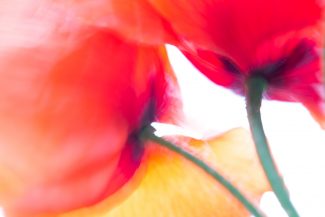
And if you experiment with this enough, you’ll start to consistently capture stunning photos.
Photos that look like impressionist paintings!
11. Get Close to Your Subject for Abstract Photos
Speaking of abstract, artistic photos…
Here’s another way to create something ultra-creative.
Get close to your subject.
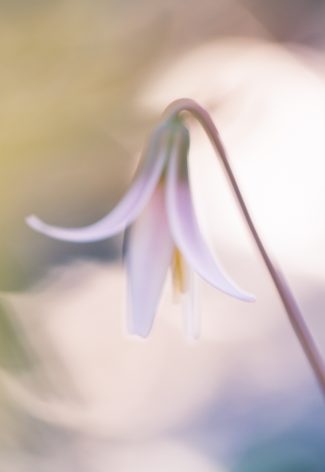
And when I say “close,” I mean really close. So close that you can no longer see your subject as a thing, and you start to see it in terms of shapes and lines.
That way, you’ll be able to take an abstract, like this:
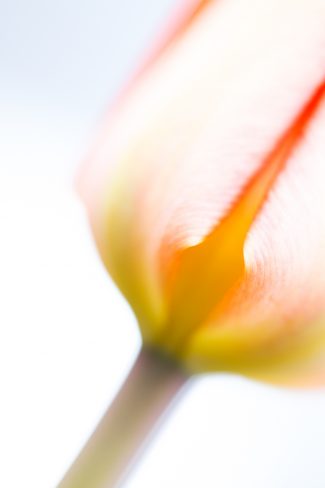
Do you see how it’s really just a few nice shapes?
To do this, you’re going to need a lens that focuses pretty close. A macro lens is best for this. But if you don’t have one, that’s okay; just figure out which of your lenses focuses closest, and use that one.
Pretty soon, you’ll be taking stunning abstracts!
12. Take at Least One Photo Every Day to Improve Photography Fast
A few years back, I only went out once a week to take photos.
But one day I decided that was going to end; I resolved to shoot at least a photo every day for a month.
And once that month was up, I was astonished.
Here’s why:
Because when you take a photo every day, your mind starts to open up. You start to see compositional opportunities you never would’ve noticed previously. You start to pay attention to the light, the color, and the way different elements fit together.
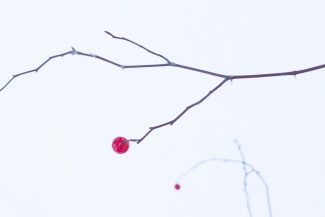
In other words, you become a better photographer.
So if you want to improve photography, you should absolutely shoot every day.
The gains will be enormous.
13. Find a Powerful Main Subject to Anchor Your Photo
Pretty much every good photo needs a main subject.
The main subject is the thing that drew you to the scene in the first place. The thing that stands out.
Now, it’s very easy to forget about this, and include lots of individually powerful elements in your photo.
But you’ve got to resist the urge.
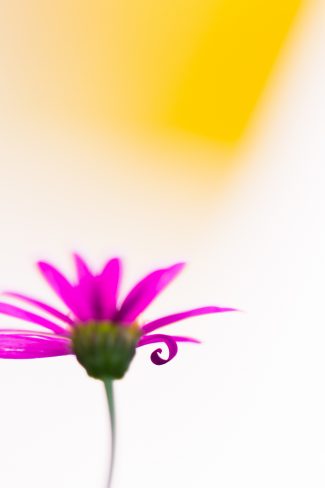
Because you want to keep it as simple as possible. If you can, keep it to one main subject, and a nice clean background.
That way, the subject will stand out–and it will act as an anchor for the photo.
14. Use the Broken Backlighting Technique for Beautiful Bokeh
The broken backlighting technique is a great way to create a beautiful background blur.
(Background blur is also known as bokeh.)
For instance, I captured this shot using the broken backlighting technique:
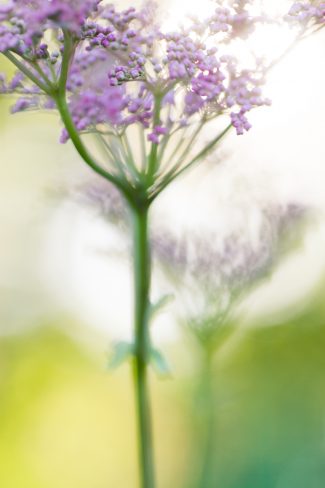
Notice the geometric bokeh in the background. It’s the perfect finishing touch to a strong photo.
Here’s how it works:
Shoot late in the day, when the sun is low in the sky. And choose a subject that’s between you and the sun.
But you shouldn’t include the sun in the photo. Instead, you should find a background element that blocks the sun from the frame–that breaks the backlight. Something that’s not completely solid, like a leafy tree.
The tree leaves will break the backlight, resulting in many smaller rays of light.
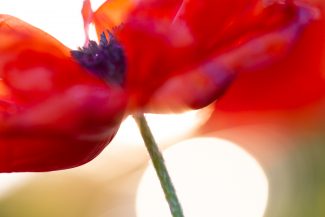
And it’ll give you broken backlight backgrounds.
15. Increase the Subject-Background Distance for the Best Background Blur
In pretty much every genre of photography, the background is important.
You don’t want just any background. Instead, you want something that’s simple and non-distracting. Because you want to make the main subject stand out.
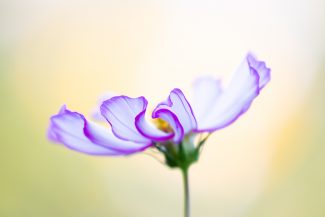
Now, one of the best background is a nicely blurred background. As you may recall, you can achieve a good blur by using a wide aperture (in the area of f/2.8 to f/4).
But there’s another way to enhance the blur:
By increasing the subject-background distance.
If you choose a subject that’s far away from the background, the background blur will look so much better. Even once you’ve chosen a subject, you can always search for a more distant background–so that you can get that beautiful blur.
This subject was far from the background, resulting in a creamy blur:
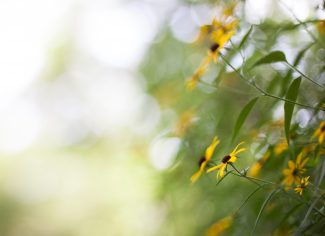
16. Shoot Through Other Objects for an Artistic Foreground Wash
If you’re looking to make your photos a bit more creative…
…why not try the Shooting Through technique?
It’s very simple.
Once you’ve found a powerful main subject, dial in a wide aperture. Then look for something in the foreground, something that’s fairly solid in color. Vegetation works well, as do flowers.
Finally, position the foreground element so that it’s close to the lens. When you take your shot, the foreground element will be completely blurred–resulting in a nice foreground wash, like this:
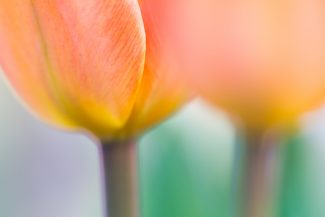
17. Carefully Choose the Right Lens for the Job
If you want to capture beautiful photos, consistently, you’re going to want a few lenses that you use in different situations.
However, it’s important to pick the right lens for the right situation. That way, you make sure you’re able to capture the scene you’ve envisioned.
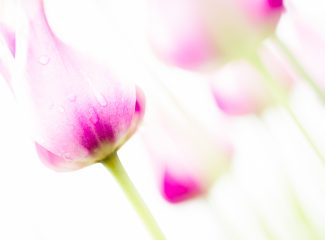
If you’re planning to go out and shoot landscapes, you’ll need a wide-angle lens. That way, you’ll be able to capture some lovely wide scenics.
If you want to shoot portraits or street photos, a standard lens, one in the 50mm range, is perfect.
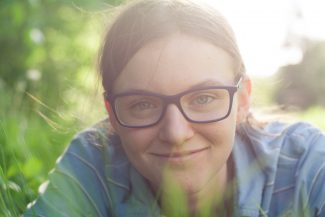
And if you want to shoot birds or wildlife, a telephoto lens will be a big help. (The longer the telephoto, the better!)

18. Use a Tripod for Low Light Photos
In a previous tip, I explained the value of fast shutter speeds.
But here’s the thing:
Fast shutter speeds come with a tradeoff.
While they will make your photos sharp, fast shutter speeds don’t let in much light–and so they result in darker photos.
This isn’t a problem in bright sunlight, when you have enough light to keep your photos from becoming too dark.
But when you’re shooting in low light, a fast shutter speed is going to get you ridiculously dark images.
So if you’re shooting in low light, you have to change your strategy.
You still want sharp photos. But instead of using a fast shutter speed to prevent camera shake, you use a tripod.
Related Post: Best Beginner Tripods
A tripod stabilizes your camera, preventing any sort of camera shake.
But you want to be careful:
If you shoot moving objects, they’ll still blur, like this:
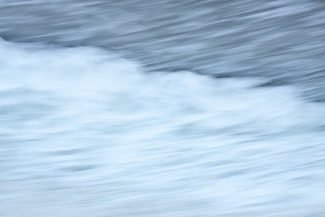
So you should choose scenes that have very little movement, such as landscapes and building shots.
And you’ll get sharp, stunning shots.
19. Always Shoot in RAW for the Most Processing Freedom
There are two main types of files that modern digital cameras use:
JPEG files are the default on most cameras. This is because they’re smaller, and they look better straight out of camera.
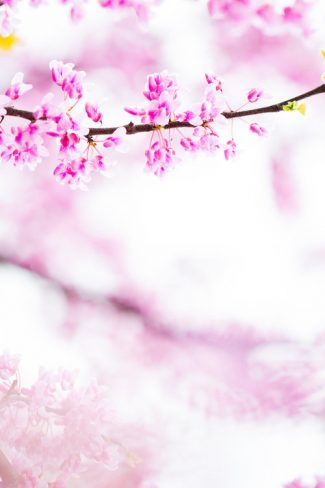
But here’s the problem with JPEGs:
They’re compressed, which means they have less information. And this results in much less post-processing flexibility.
That’s where RAW files come in:
They’re completely uncompressed–and so they include all the information the sensor captured at the moment of exposure.
You can then use this to bring back detail during post-processing, adjust the white balance, and make drastic changes to the colors.
In other words, you’ll be able to significantly enhance your photos.
So always shoot in RAW. No matter what!
Even if you don’t want to process your photos now, you’ll thank me later!
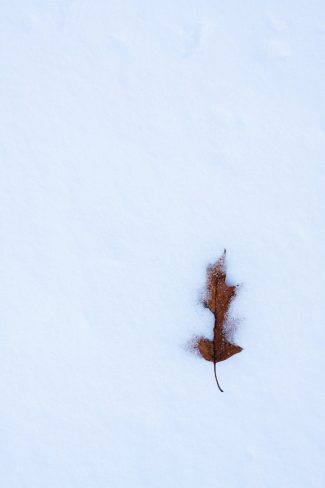
20. Experiment With Different Angles for Original Photos
Do you find that your photos always look the same? Do you want to start taking more unique images?
If so, here’s a great trick:
Shoot with different angles.

In fact, I recommend that you shoot your subjects from five different angles, whenever you can.
Try finding a vantage point and getting up high.
Then get down low, so that you’re shooting up from below.
Finally, crouch down, so that you’re on a level with your subject, and shuffle around, searching for unusual angles.
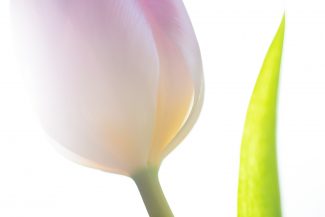
That way, you’ll capture perspectives that nobody has ever seen before–and it’ll quickly take your images to the next level.
21. Look at Stunning Photos Every Day to Improve Photography
Here’s a great tip for improving your photography–and you won’t even have to leave the house!
All you have to do is get on your computer…
…and look at beautiful photos at least once a day.

You see, the more you look at good photos, the more you’ll start to see compositions all around you. And the better you’ll become at seeing stunning photo opportunities in the moment.
Fortunately, it’s not hard to find good photos to look at. Follow a few gorgeous Instagram accounts, and you’ll have all the photos you need!
22. Find High-Contrast Situations for the Most Impactful Shots
If you’re a beginner photographer, you’ll hear everyone talk about the importance of good light. And the value of great compositions.
But nobody talks about contrast. And they should.
Here’s why:
Contrast is a secret sauce of good photography. The best photos tend to have very striking contrast.
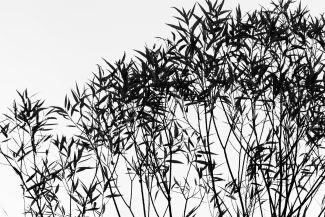
In other words, there is a clear difference in tones between the main subject and the background, or between two main subjects.
This is a high-contrast shot, because it incorporates both light and dark tones:
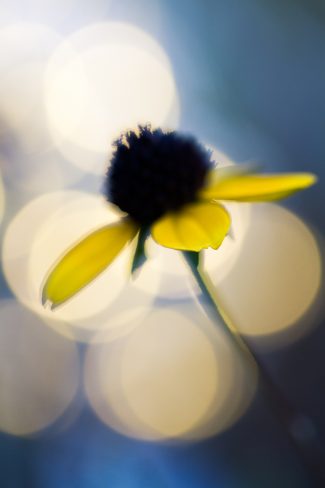
And notice how the contrast makes the shot work. It gives the viewer something to focus on.
If you’re out shooting, look for contrast. And incorporate it whenever you can.
23. Match Complementary Colors for Stunning Images
Complementary colors sit opposite one another on the color wheel.
For instance, red and green is a popular complementary color pair. Same with blue and orange. Same with purple and yellow.
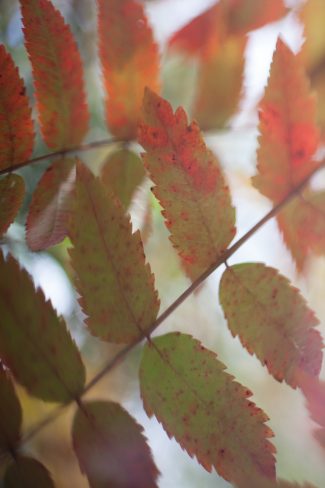
Now, complementary colors are valuable because they provide contrast. (And if you’re not sure why contrast is so important, look at the tip above this one!)
So whenever you’re out shooting, look for complementary colors. And try to pair them up in your images.
Don’t put too much of both colors. Because complementary colors are so high-contrast, this can be overpowering.
But try to incorporate a mix of both colors.
Like this:
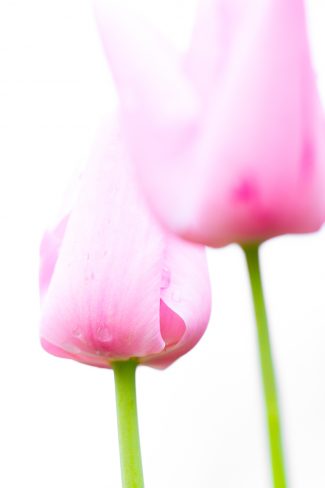
24. Isolate Your Main Subject for the Best Photos
When I talked about the rule of thirds, I explained the importance of positioning your main subject to create a satisfying balance.
But viewers will never perceive balance if they’re constantly distracted by unimportant parts of the image.
That’s why you need to isolate your main subject as much as possible. Before you take a shot, look around the frame.
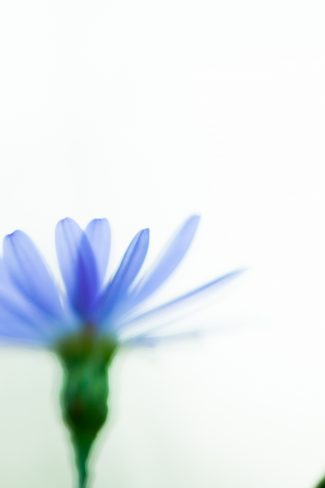
Do you see any distractions? Anything you might want to get rid of?
Distractions include leaves, branches, or twigs at the edges of the frame, telephone poles coming out of your subject’s head, street signs in the background, and more.
Now, if you identify a distraction, you don’t have to give up on the shot. Instead, figure out a way to get rid of the distraction. Either change your angle, or move the distraction out of the way.
(Of course, if you do decide to move the distraction, take care not to disturb natural areas!)
Once the photo has been cleared of all distractions, you’ll be good to go!
25. Simplify Photos as Much as Possible for the Best Compositions
To expand on the importance of removing distractions…
…you should also try to simplify your shots as much as you can.
This isn’t just getting rid of stray leaves and twigs around the edges of your photos.
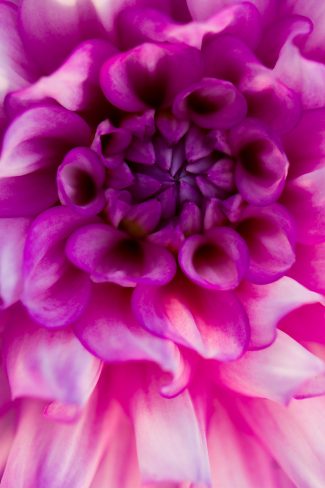
Instead, simplifying your photos involves choosing a subject that’s very simple–one that’s easy to process.
And it’s about choosing a beautiful backdrop. The background should be as uniform as possible. A nice, white wash works well. So does a solid green backdrop.
As discussed above, you can use a wide aperture and a large subject-background distance to achieve the best backgrounds.
Just make sure you simplify, and everything will be okay!

26. Use the Sun-Shade Technique for Creamy Backdrops
The sun-shade technique is a simple way to get gorgeous backgrounds.
In fact, it’ll help you achieve smooth backdrops like this:
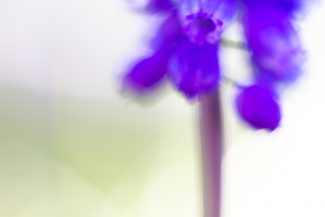
And it’s really, really easy.
Here’s what you do:
Go out to shoot during the golden hours, when the sun is low in the sky.
Find a subject that’s in the shade.
And position it in front of an area lit by the setting sun.
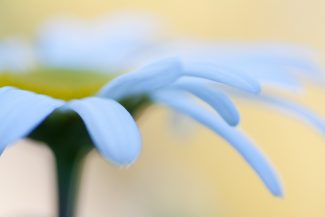
If you choose your aperture and shutter speed carefully, you’ll get a lot of detail in the main subject–and you’ll get a gorgeous, creamy background.
Note that you want to select a wide aperture, so that you get the best possible blur. And don’t forget to maximize the subject-background distance!
27. Paint Boards to Create Stunning Black or White Backgrounds
It’s important to have a beautiful background if you want a master photo.
But you don’t always have to rely on nature to give you a stunning backdrop. With a bit of work, you can make stunning backdrops, all on your own!
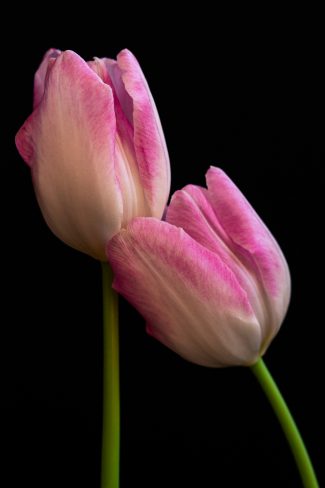
Start by purchasing a plywood board at your local hardware store, along with black or white sample paint pots, primer, and a roller/brush.
Roll (or spray) the primer onto the board and let it dry. Once done, start applying the black or white paint to the board.
If you like, you can get very complex, adding texture and swirls to your backgrounds. But I like to keep it simple. My backgrounds are pure black and pure white–and I love using them!
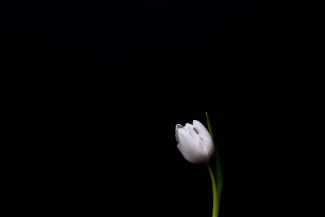
You will, too. And you can always position them a few feet behind your subject, so that they fade away, leaving you with a powerful subject and a wonderfully solid background.
28. Always Consider the Background Before Taking a Shot
I’ve talked a lot about the background, but this time I’m going to state it up front:
If you want a beautiful photo, you’ve got to capture a beautiful background. You’ve got to.
Because a poor background will ruin the whole shot. It’ll distract the viewer, or it’ll make the whole photo appear chaotic.
Instead, you want a nice, simple background.
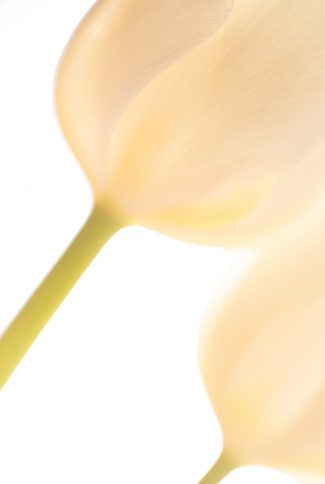
As discussed above, you can capture a simple background by removing all distractions. By shooting with a wide aperture. By increasing the subject-background distance.
You can even create a great background using the broken backlighting technique or the sun-shade technique, which will give you some of the most incredible shots.
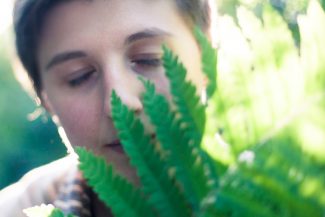
29. Keep a Low ISO to Avoid Noise
ISO refers to a camera’s sensitivity to light.
In other words, the higher your ISO, the more your camera produces bright photos. And the lower your ISO, the more your camera produces dark photos.
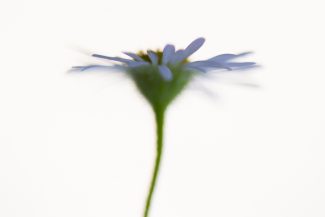
If you remember, you can offset bright photos by using a fast shutter speed or a narrow aperture, both of which will reduce the amount of light let in by the camera.
Which begs the question:
Why not simply shoot at a high ISO all the time, and then use a fast shutter speed to balance out the brightness? That way, your shots will be bright and super sharp.
Here’s the problem:
The higher the ISO, the more noise (also known as grain) that appears in your photos.
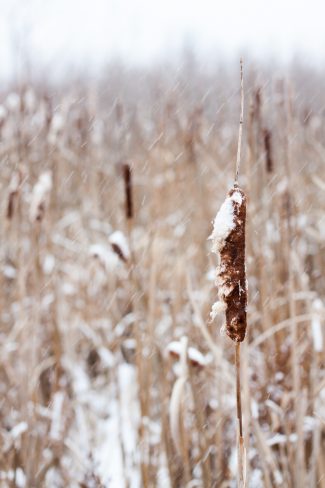
Noise is unwanted pixels that don’t match the surrounding scene. They appear as spots of color or as spots of light, and they don’t look good.
In fact, noise is one of the easiest ways to ruin a photo.
That’s why you should keep your ISO as low as the conditions allow. Don’t be afraid to raise it whenever the light is getting low. But only raise it if you have to, and always raise it carefully.
Make sense?
ISO is written like this: ISO 100, ISO 200, ISO 400, ISO 640, etc. The ISO range depends on your camera–never cameras tend to have broader ISO ranges, sometimes going into six-digit ISO values.
So choose the lowest ISO you can–and only raise it if you have to!
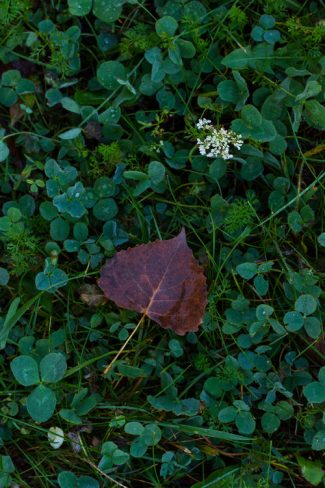
30. When the Light is Harsh, Shoot in Black and White
I’ve talked about the beauty of golden-hour lighting. And you’ve discovered the value of cloudy light.
But what about harsh, midday light? Does it ever work, or should you always avoid it?
In general, it’s best to avoid midday light.
Except for in one situation:
If you’re shooting black and white.
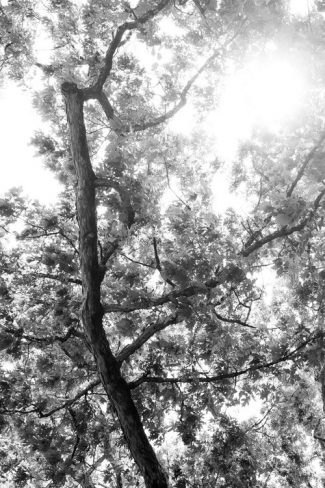
You see, the problem with midday light is that it creates unwanted contrast–contrast that looks plain bad. It makes the whites too white and the blacks too black.
But black and white photography thrives on heavy contrast. So a bit of heavy contrast will make your black and white photos better, not worse.
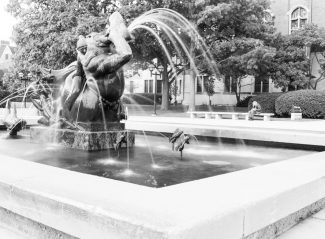
For instance, look at this black and white photo:
The heavy contrast makes it more striking!
31. Stabilize Your Body for the Sharpest Photos
I’ve talked about the importance of using a tripod in low light photography.
But did you know that there are techniques that allow you to handhold even when the light is fading?
All you have to do is carefully stabilize your body. That way, you’ll avoid camera shake, and your photos will remain tack-sharp.
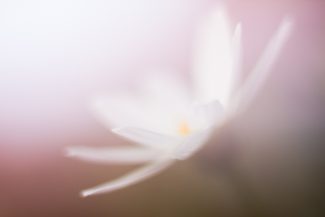
Here’s how it works:
Start by gripping your camera firmly with your right hand, and cupping the lens with your left. This is how you should take all of your photos.
Then, tuck in your elbows and bend your knees slightly (for a bit of shock absorption).
Finally, be prepared to use whatever is in the vicinity to stabilize yourself. If there’s a tree, lean against it; if there’s a wall, drape yourself over it. And if you can’t find anything to use, try getting down on the ground!

32. Look for Repeating Patterns for Striking Compositions
Here’s a composition trick I use all the time, especially when I’m doing landscape and street photography:
I look for repetition.
You can find repetition almost anywhere–if you try hard enough.
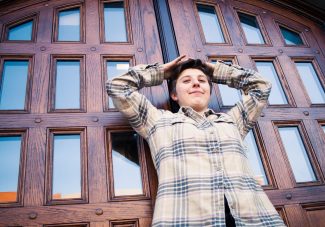
Look for lines that repeat. Shapes that repeat. Subjects that repeat. Even repeating colors can work well!
Then position yourself so that the photo emphasizes the repetition. Make sure that the repeating elements are clear and distinct. You can arrange the composition so the repeating elements all sit parallel to the viewer. Or you can place the repeating elements so that they recede off into the distance.
Just be careful to make the repetition the focus of the shot. You don’t want to have too much going on, or else you’ll struggle to hold the viewer’s attention.
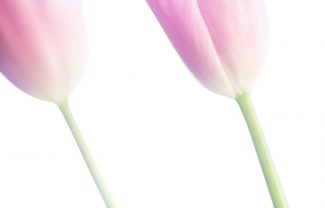
Remember the earlier tip:
Keep it simple!
33. Use Post-Processing to Enhance Your Photo’s Contrast
If I could only make one change to my photos in post-processing, it would be this one:
Increasing the contrast.
You see, contrast refers to the difference between the light and dark parts of an image. Darker blacks and whiter whites make for increased contrast, whereas grayer blacks and grayer whites result in a reduced contrast photo.
And one of the easiest ways to improve your photography is by adding a bit of contrast.
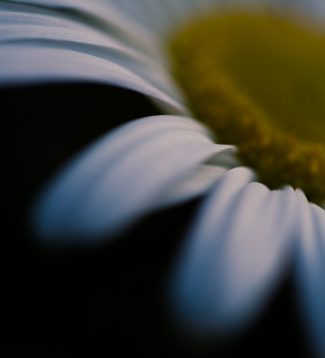
Now, you don’t want to overdo it. But pretty much every editing program has a contrast slider, and most photos can benefit from a boost.
A bit of contrast will take you from a flat image to a much more eye-catching one–so don’t forget to add some contrast to your images in post-processing.
34. Intensify Colors With Lightroom’s Vibrance Slider
Contrast is a wonderful way to make your photos pop.
But another great way…
…is to enhance the colors.

You see, the colors in most photos appear a bit too dull, a bit too flat. And they could use a slight boost.
One way to fix this is with a saturation slider. These exist in pretty much any editing program, and you only have to push up the slider a little to see results.
But the problem with saturation is that it works on every color in your photos. While it can be nice to see a saturation boost in most colors, certain colors are already saturated–and a saturation boost makes them look garish.
So what do you do?
You use Lightroom’s Vibrance slider.
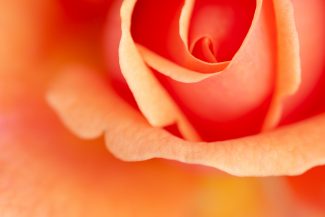
You can find Vibrance in the Lightroom’s Basic panel, within the Develop module.
Vibrance is like smart saturation. It only boosts the colors that are less saturated, and it leaves the already saturated colors alone.
I use a bit of Vibrance on almost every one of my shots. It’s just that helpful!
35. If You’re Struggling to Focus, Switch to Manual
Do you ever have situations where your lens just can’t focus?
It hunts back and forth, back and forth, back and forth.
And by the time it has focused on anything at all, you’ve missed the shot!
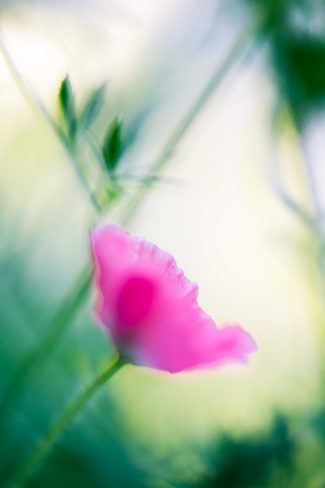
It’s a common problem. And it has a variety of causes: low light, focusing up close, focusing on low-contrast subjects, etc.
Regardless of the reason, a quick way to deal with this problem in the field is to switch to manual focus.
You can do this pretty easily; there will be a nice switch on your lens that lets you toggle between autofocus (AF) and manual focus (MF).
Once you’ve switched over to manual focus, you can turn the focusing ring on your lens to shift focus throughout the frame. Just be sure to go slowly and carefully, and everything will be fine–you’ll nail focus, and your shots will be nice and sharp!
36. Get Down on Your Subject’s Level for Intimate Shots
This is one of the easiest ways to improve your photos, and one of my absolute favorites:
Get down on a level with your subject.
See, it’s so easy to get in the habit of shooting from chest height, so you get the same boring angle over and over again.
And unless your subject really is chest height…
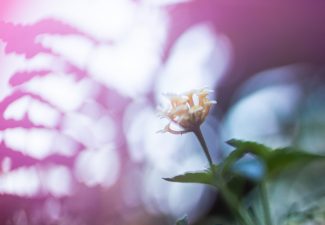
…your shots will just look boring.
Instead, you should try getting down low. If your subject is a child, make sure that you put your camera on a level with their eyes. The same is true for other living creatures, such as pets, insects, and birds.
If your subject is a flower, you don’t have any eyes to focus on–but you can look for the body of the flower, and get down so that you’re on its level.
The point is to create an emotional connection between the viewer and the subject.
And you won’t be able to do that–unless you get on the subject’s level!
37. Share Your Photos Online to Improve Your Photography
Do you share your photos with friends? With family? With other photographers?
You should.
First of all, other people–even non-photographers–can give you good feedback on your work. They can tell you what they like and give you a sense of what isn’t working.
If you want serious critiques, you should try some of the online critique sites, such as naturephotographers.net or naturescapes.net. These are dedicated to providing quality critiques to participating photographers. You can also find critique groups on Facebook if you’re looking for something a bit more informal.
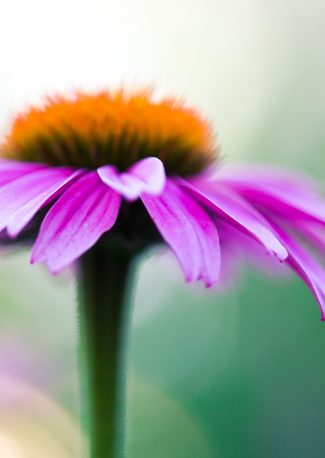
But sharing your photos online isn’t just valuable because of what others can give you.
I’ve been sharing my photos online for years. And I’ve found that there’s something about sharing your photography that makes you think. It makes you consider your own work more carefully. You start to ask questions like: What do I like about this photo? What makes me want to post it? And what should I do better for next time?
Ultimately, sharing makes you into a better photographer.
38. Read Photography Blogs to Discover More Helpful Tips
This article includes 52 tips for improving your photography, all of them carefully chosen to give you the most possible help.
But even though these tips will go a very long way, there’s always more to learn. Especially if you’re interested in pursuing specific genres of photography.
Fortunately, there’s a wealth of genre-specific photography information out there–and it’s all free! Because plenty of skilled photographers keep blogs, and these are full of amazing tips and tricks for improving your photos.
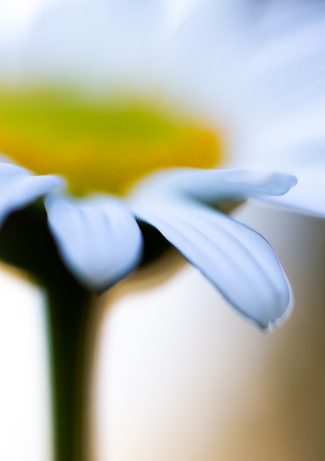
For information on all different types of photography, you should check out our other articles, which cover topics from landscapes to flowers to the best monitors for photo editing. You can also look at Digital Photography School, which publishes plenty of thoughtful articles about many areas of photography.
For genre-specific photography needs, just do a quick Google search, and you’ll come up with plenty of resources on taking great photos!
39. Use Aperture Priority to Expose Your Photos Properly
When it comes to getting the correct exposure, your camera offers a few helpful modes.
First, you can use Auto mode–where your camera chooses all the settings for you. It will basically get you generally accurate exposures, at the cost of flexibility. This is the mode that most beginners use, and it’ll do the job for a time.
But if you want to become a great photographer, you’ve got to move past Auto mode. Because Auto doesn’t let you make the creative choices you need to take stunning photos.
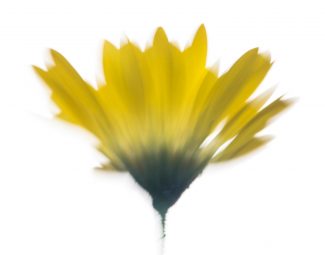
There’s also Shutter Priority mode. This mode allows you to choose your shutter speed and ISO; the camera will set the aperture in response.
While Shutter Priority can be useful when the shutter speed is a priority, such as in shots of moving water, I recommend avoiding it. The aperture is a more effective creative tool, and one that you want control over whenever taking photos.
Which brings me to my recommended camera mode:
Aperture Priority mode allows you to set the aperture and ISO. Your camera will choose the shutter speed.
What’s great about Aperture Priority is that it gives you control over what is arguably the most important camera setting. And Aperture Priority will choose the fastest shutter speed given that aperture, so you’re generally not sacrificing much in terms of control.
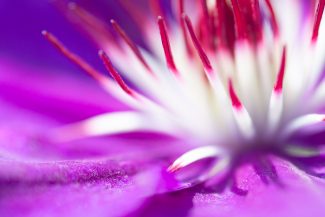
40. Avoid Highlight and Lowlight Clipping With Lightroom’s Special Tools
Highlight clipping refers to a loss of detail when your photo’s highlights (the bright parts of the image) become too bright.
Lowlight clipping refers to a loss of detail when your photo’s lowlights (the dark parts of the image) become too dark.
Highlight and lowlight clipping can be a real problem, something that you should always be on the lookout for while in the field. Shooting in RAW will give you some extra leeway when it comes to overexposure and underexposure, but it’s not always possible to recover from a significant exposure error.
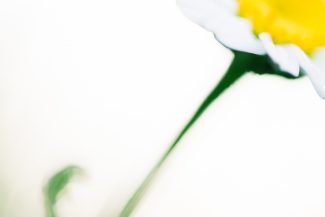
Now, Lightroom has an excellent tool that allows you to identify clipping–as soon as it crops up in your photos.
In the Develop module, look in the upper right-hand corner. Do you see the histogram?
At the top of the histogram, there are arrows on both the right and left edge. Click these arrows, and any clipping will be highlighted in your photos.
Cool, right?
This is super useful when attempting to quickly identify overexposed and underexposed spots in your photos. But it’s also useful for post-processing; it lets you avoid causing any clipping with the adjustments you make in editing.
So just click the two arrows, and you’re set!
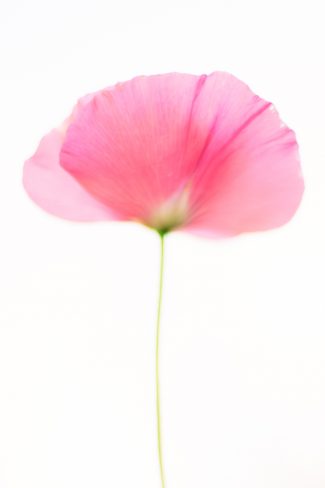
41. Use HDR Techniques to Capture Impressive Detail
HDR stands for high dynamic range.
And the dynamic range refers to the range of tones that appear in an image.
For instance, a photo with both very dark tones and very light tones has a large dynamic range, like this one:

Whereas a photo that’s mostly gray has a very low dynamic range.
Now, if you’re a landscape photographer, you’ll often find yourself shooting scenes with extremely large dynamic ranges. Sunrises and sunsets, in particular, have a huge tonal variation. The sky is ultra-bright, whereas the foreground is comparatively dark.
Unfortunately, even modern cameras don’t have the dynamic range to capture this tonal difference. Which is why you can use HDR techniques to deal with the problem.
What you need to do is something called exposure bracketing. Basically, you take several shots of the same scene, while varying the shutter speed. So you determine a good exposure for the foreground, and take that shot. Then you determine a good exposure for the sky, and take that shot. You might also take an exposure that sits between the two, just to be safe. Finally, you blend the shots together using HDR software.
Note that you can do bracketing manually, where you take several shots while adjusting the shutter speed. Or you can use auto-bracketing, a tool offered by most cameras, which varies the shutter speed for you.
One thing to remember, however, is that HDR photography is ideally done with a tripod. Because you have to blend multiple exposures together, any compositional differences between the two shots will cause the HDR software to struggle. Best to use a tripod, keep the framing consistent, and capture some stunning HDR images.
41. Get Several Filters for the Best Landscape Photos
A filter is a piece of glass that mounts in front of your camera lens.
As digital processing techniques improve, filters become less and less common. But did you know that filters can dramatically improve your landscape photography?
It’s true.
You see, you can use filters to achieve some beautiful effects. So in this tip, I’m going to talk about two super-useful landscape filters:
Polarizing filters and neutral density filters.
Basically, polarizing filters reduce glare and reflections. This is extremely useful when shooting any reflective surfaces, such as water, or even wet leaves. It allows you to cut through the reflections, and capture the true beauty underneath.
For instance, if you want to photograph fall leaves, you’ll want to put on a polarizer. It will make the reds, yellows, and oranges much richer and more beautiful.
Here’s an example of a non-polarized shot:
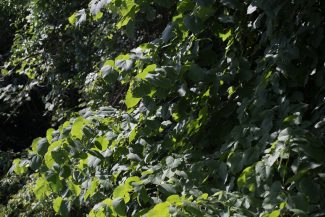
And here’s the polarized counterpart:
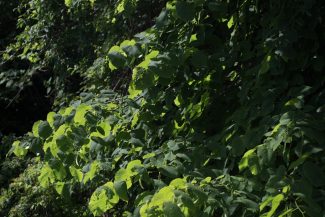
See how the reflections have faded? And how the colors have become more saturated? That’s exactly what you want in your landscape photos.
And I should note: Polarizing effects are one of the few tools that cannot be mimicked in post-processing. So if you want a polarized look, you’ve got buy the filter!
As for the other great landscape photography filter type:
Neutral density filters.
Neutral density filters are a solid, dark color. They’re essentially sunglasses for your lenses. They reduce the amount of light coming in by an equal amount all across the frame.
So what makes them so useful?
Landscape photographers use neutral density filters whenever they want to use a long shutter speed–but they have too much light to pull off the shot.
In other words, if it’s a bright and sunny day, a slow shutter speed will let in too much light. Even with a narrow aperture, the shot will be overexposed.
So you slap a neutral density filter over the lens.
The ND filter will block the light, and you’ll be able to capture your slow-shutter speed shot.
43. Look for Leading Lines to Create Compelling Compositions
If you want to create a strong, engaging composition, then you have to draw the viewer into the frame.
And one of the best ways to do that…
…is to use leading lines.
Leading lines are simply lines–that lead the viewer from one part of the image to another. They can be anything, though they’re most commonly natural features of the land such as rivers, fallen trees, or ripples in sand dunes.
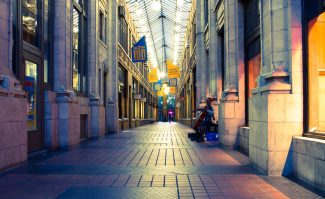
Leading lines are great for sucking your viewer into the photo. And it’s actually possible to find leading lines in most scenes, if you look hard enough.
For instance, I used a flower stem as a leading line in this photo:
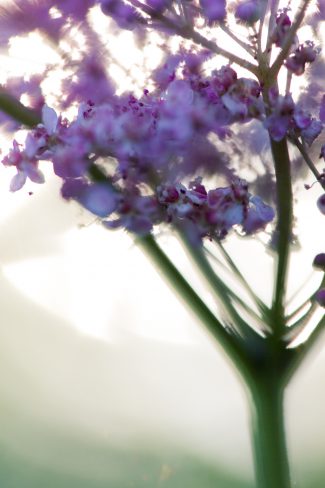
Notice how the stem leads you straight toward the flower, which is the main subject. That’s the power of lines–you just can’t resist them!
And, as I did in the photo above, you want to be sure your leading lines actually lead somewhere. They shouldn’t point aimlessly around the frame. Instead, they should either take you to another leading line–or to your main subject.
44. Lift the Black Point to Add a Faded Look
The black point of your image refers to the darkest point in the shadows.
If your image has true dark blacks, that means you have a low black point.
But if your image has blacks that appear gray, that means you have a much higher, lifted black point.
Generally speaking, a low black point looks good.
Why?
Because it both increases the tonal range and adds contrast to your photo.
That said…
A lifted black point can look good, as well. In particular, it gives you a more faded look, like what you might expect from an older, antique-style shot.
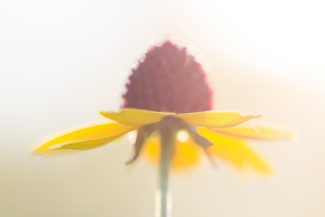
And this can look very artistic.
So don’t be afraid to lift the black point for a unique look!
Note that, to change the black point, you can use the blacks slider in Lightroom. This controls the black point, and you only have to increase the slider to raise the black point.
45. Use Split Toning for a Cinematic Quality in Your Photos
Split toning is a post-processing technique that puts a specific color in the highlights of your photos (the brighter parts) and another color in the shadows of your photos (the darker parts).
Split toning can give you a wonderfully cinematic look, as creates a more artistic, pleasing photo.
In fact, split toning is used all the time in movies, because it adds a little something extra to the scene.
To split tone, you can use Lightroom’s Split Toning panel, which is located in the Develop module. Simply click to choose a color for the highlights, then do the same for the shadows.
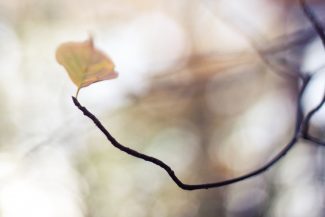
Feel free to experiment with different color pairs. Blue shadows and gold highlights are a favorite of cinematographers and photographers, as are teal shadows and orange highlights.
Try these looks, and then come up with a few of your own!
46. Shoot Against the Sky for Stunning Backgrounds
I’ve talked a lot about the importance of a beautiful background.
You now know that a uniform background works some serious magic on your photos. You know that it makes the subject stand out, thereby creating an extremely powerful image.
And in this tip, I’m going to share one of my favorite ways of creating a uniform background:
Shooting against the sky.
This requires you get low to the ground. You often have to shoot upward, unless you can find an area behind your subject with a low horizon.
Now, you can shoot against the sky in pretty much any situation and come away with a beautiful, simple background. But I’m a big fan of using this trick on cloudy days, so that you get a pure white background, like this:
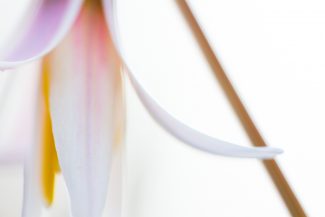
You can also try this trick late in the evening, when the sun has just fallen below the horizon. The sky is often a lovely orange color, and you can capture that as part of your background, like this:
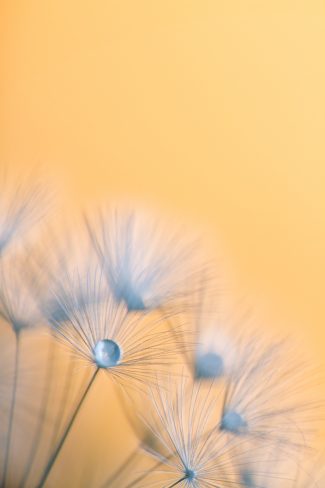
47. Always Focus on the Eyes for Beautiful Portraits
Are you looking to take stunning portrait photos? The kind that really pop?
Here’s the thing:
It’s not hard to capture beautiful portraits. As long as you find a good background and use good light, you’ll be on your way.
There’s just one more thing to remember:
That you should always focus on your subject’s eyes.
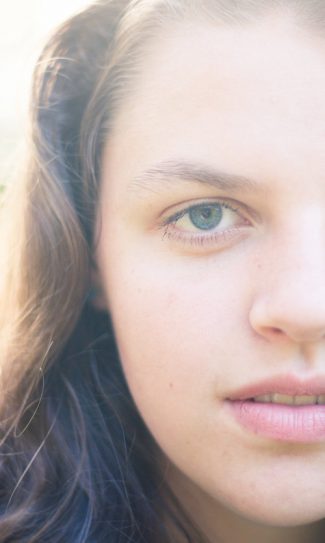
Because the eyes are what allows the viewer to connect with the subject. So if you nail focus on the eyes, your shots will look amazing.
But if you miss focus on the eyes…
…the shot just won’t work.
48. Incorporate Motion for a Dynamic Image
If you think your photos are a bit boring, here’s a simple way to spice them up:
Incorporate motion.
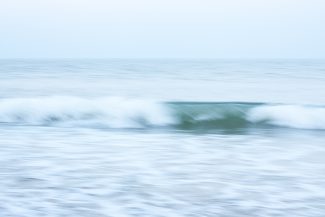
Motion makes images look so much more dynamic and so much more engaging.
And it’s not very difficult to find!
If you like shooting people, ask them to run and jump. Photograph them while they’re in the air.
If you like shooting wildlife, try to catch your subjects in motion.
And if you like shooting landscapes, find a scene with moving water or vegetation that waves in the wind.
You’ll love the images that result.
49. Create a Flow Throughout Your Photo for an Engaging Composition
Here’s a secret about the best compositions:
They tend to have a flow.
That is, they make your eyes flow from one element to another–and ultimately to the main subject.
This is great, because it really engages the viewer. And it draws them right into the frame.
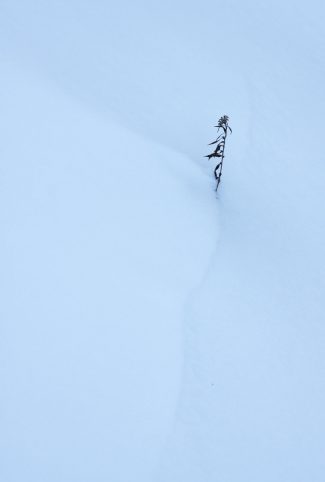
Now, leading lines are a great way to create flow. They move the eye through the image, taking it on a journey.
Curves tend to work, as well.
So whenever you see lines or curves, try to incorporate them into your photos. Position them so they lead the viewer around the frame.
That’s how you’ll get the most engaging images!
50. Use Minimalism to Create Impact
Minimalism is a compositional style that emphasizes simplicity.
Minimalistic shots tend to have a single subject and a solid white or black background, like this:
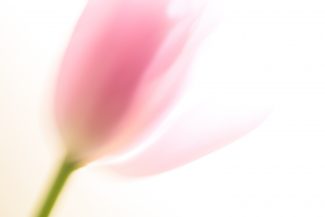
The idea is to let the background fade away, therefore drawing attention to the main subject. And it really does work!
So whenever you see a subject that can stand on its own, try to create a minimalistic composition. Place the subject along a rule of thirds power point (or even a bit below or above).
And then capture a beautifully minimalist photo.
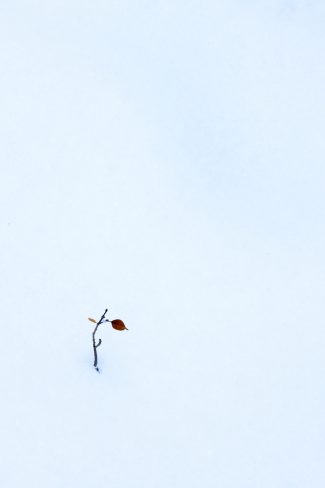
51. Reduce the Number of Colors to Make Your Photos More Powerful
I’ve talked a lot about composition and light.
But did you know that color is extremely important, too?
Without a good arrangement of colors, your photos will either appear too messy–or fall flat.
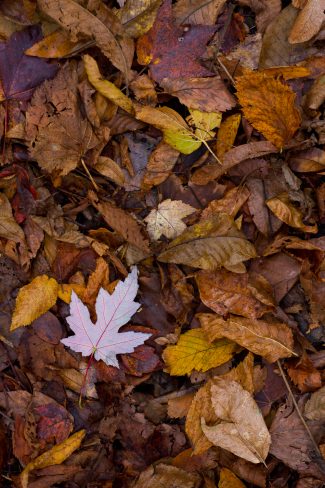
So here’s what I recommend:
Keep the number of colors low. Two colors (especially if they’re contrasting colors) work great. Three colors can look good.
If you use four colors, you have to be very careful–make sure they’re arranged in an orderly fashion.
Keep the colors low, and your photos will look that much better.
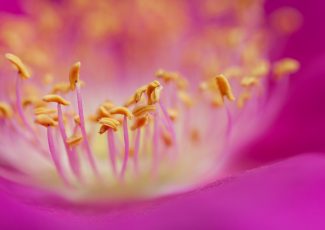
52. Frame Your Subject for a Tight Photo
Here’s an easy compositional trick for you:
When you’re out shooting busy scenes…
…try framing your main subject.
In other words, find a square element, and put your main subject somewhere within it, like this:
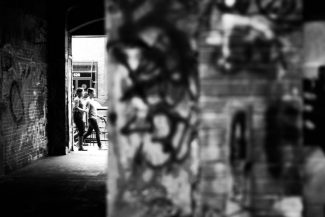
This will give you a nice, tight composition, and it will look especially impactful. It’s also a great way to remove distractions from the scene.
For instance, if you’re shooting a busy street, you might find a doorway, and use it to block people from appearing in the shot. Instead, you can make sure that only your main subject appears inside the doorway–and you won’t have to worry about anything drawing attention away from the focal point.
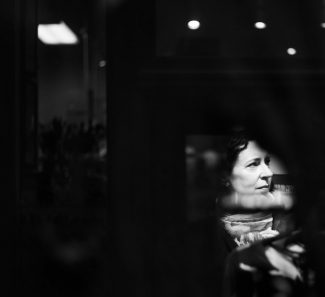
52 Tips to Improve Your Photography Skills: Conclusion
You should now feel extremely confident in your photos.
Because now that you’ve read these 52 tips, you’ve improved your photography, guaranteed.
You know how to do so many things:
- Find the best light
- Choose the best composition
- Do some amazing post-processing to improve your photos
- Make your photos unique
- And much more!
Just remember these tips, and you’ll be golden.
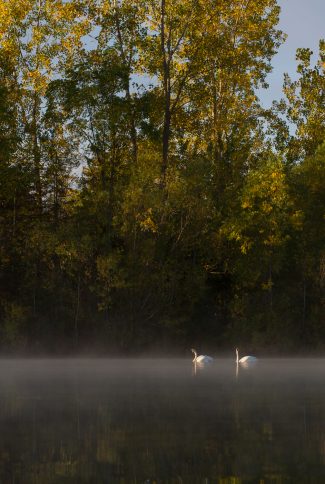
One more thing:
If you’re worried you won’t remember all of the 52 tips, you should sign up for our 52-week PhotoWorkout course. We’ll email you a tip a week–so that you’re always learning, and you’re always improving!
